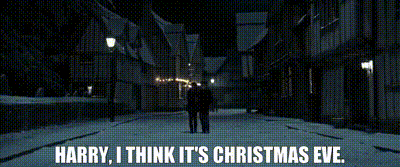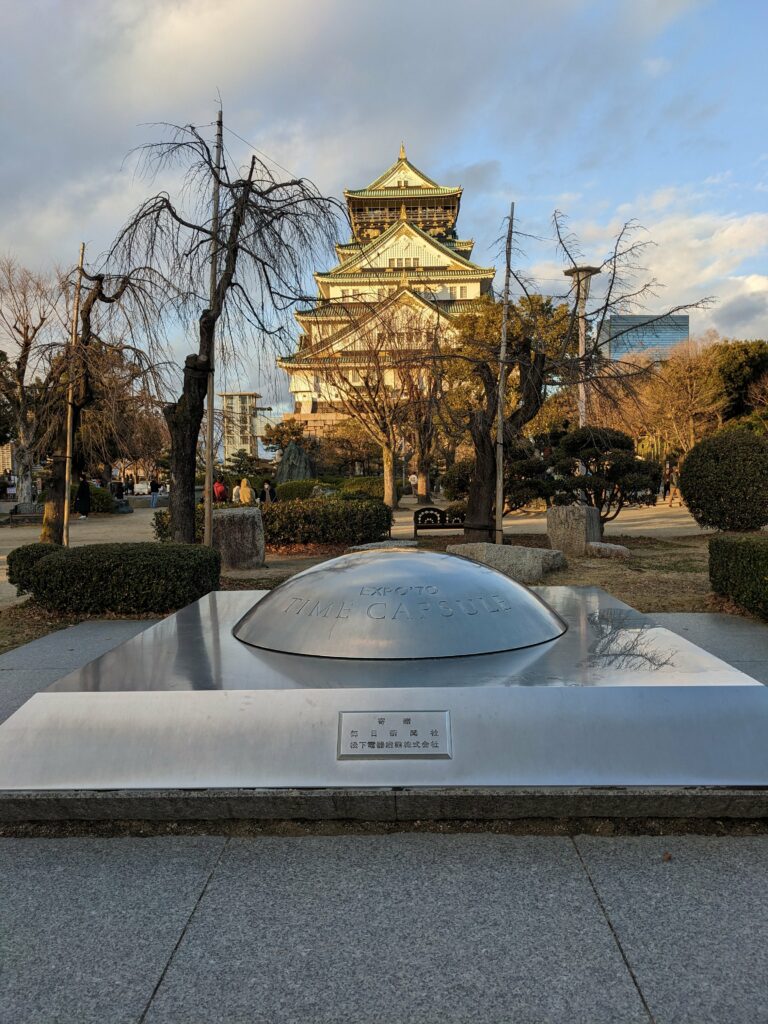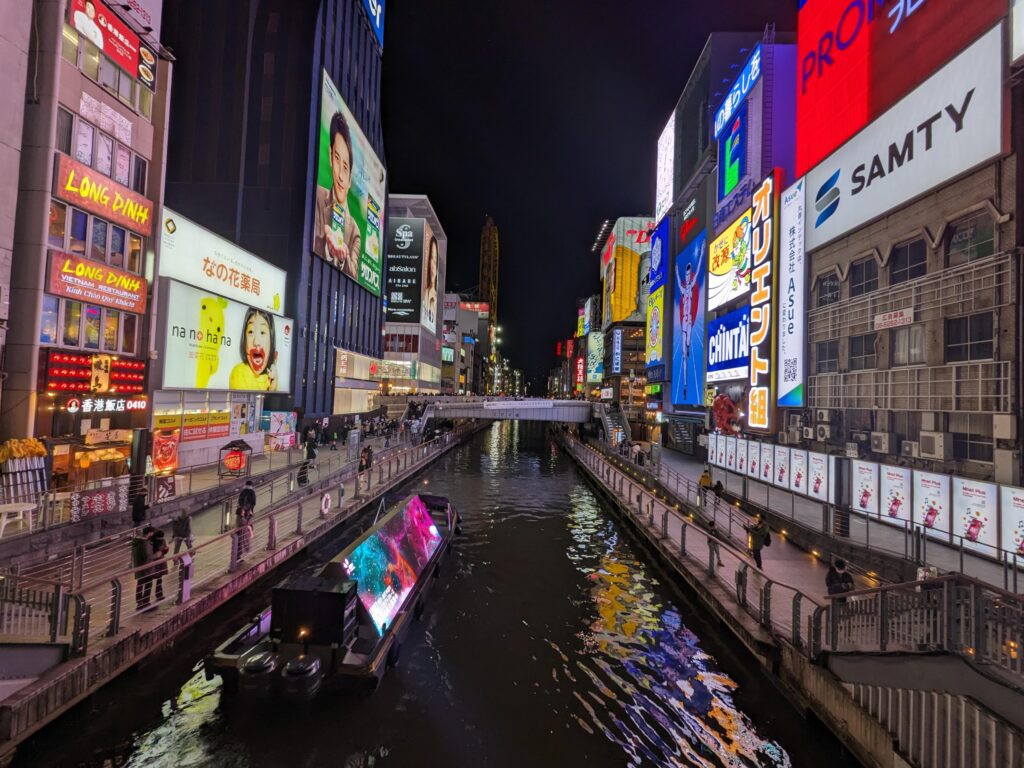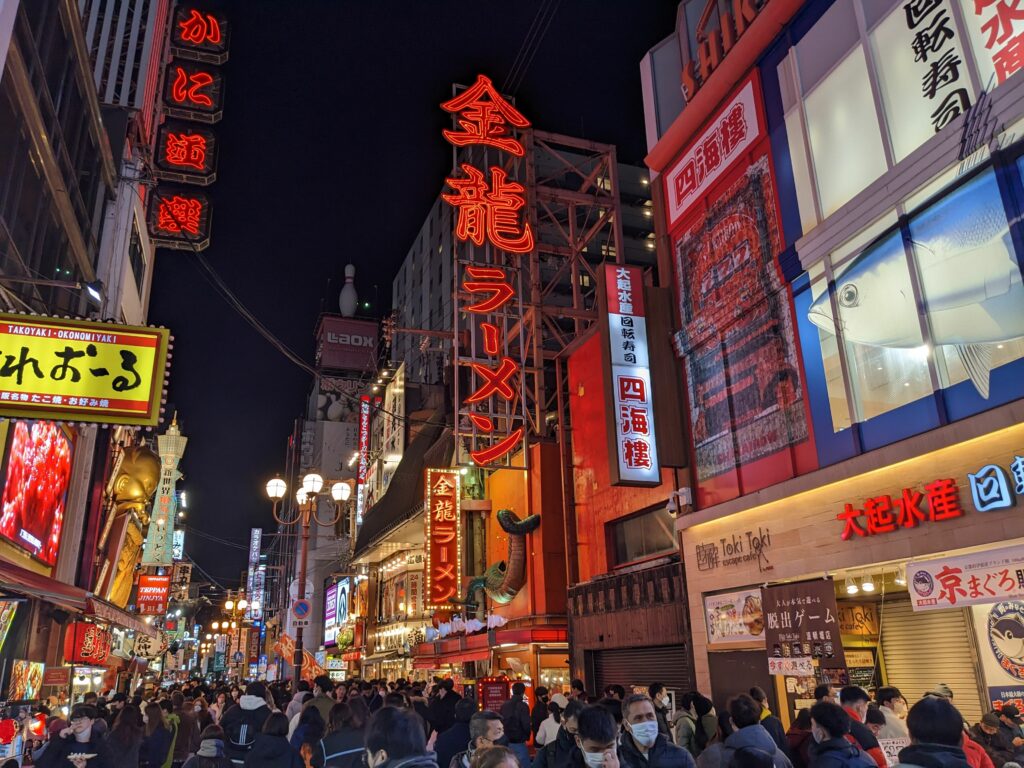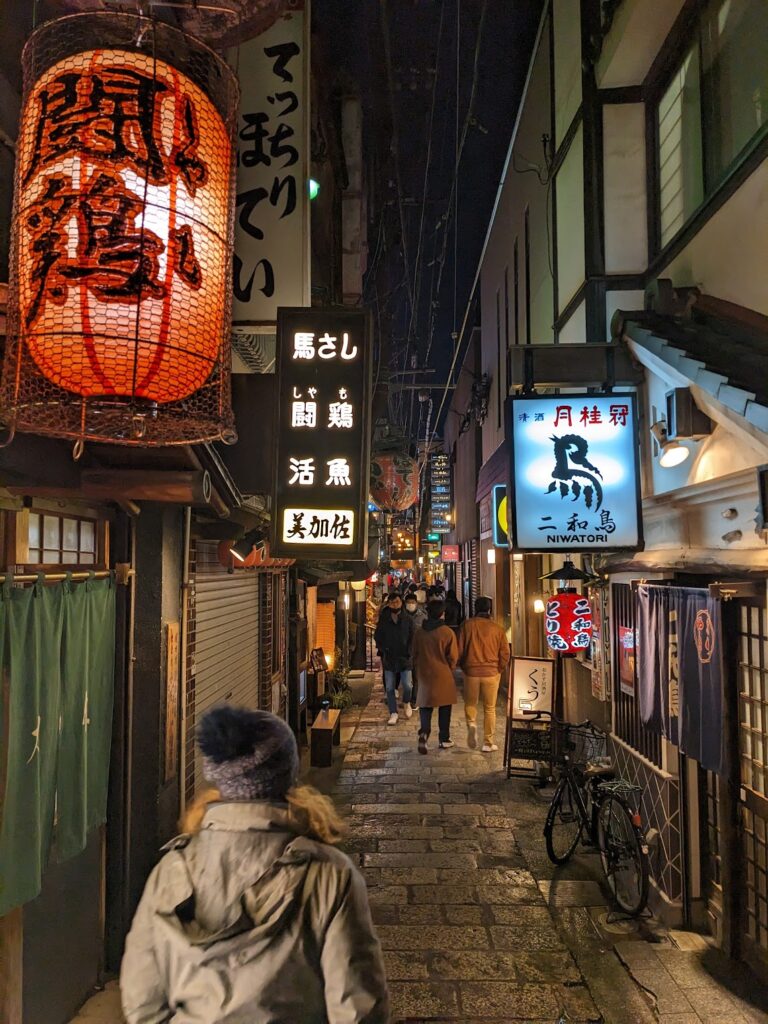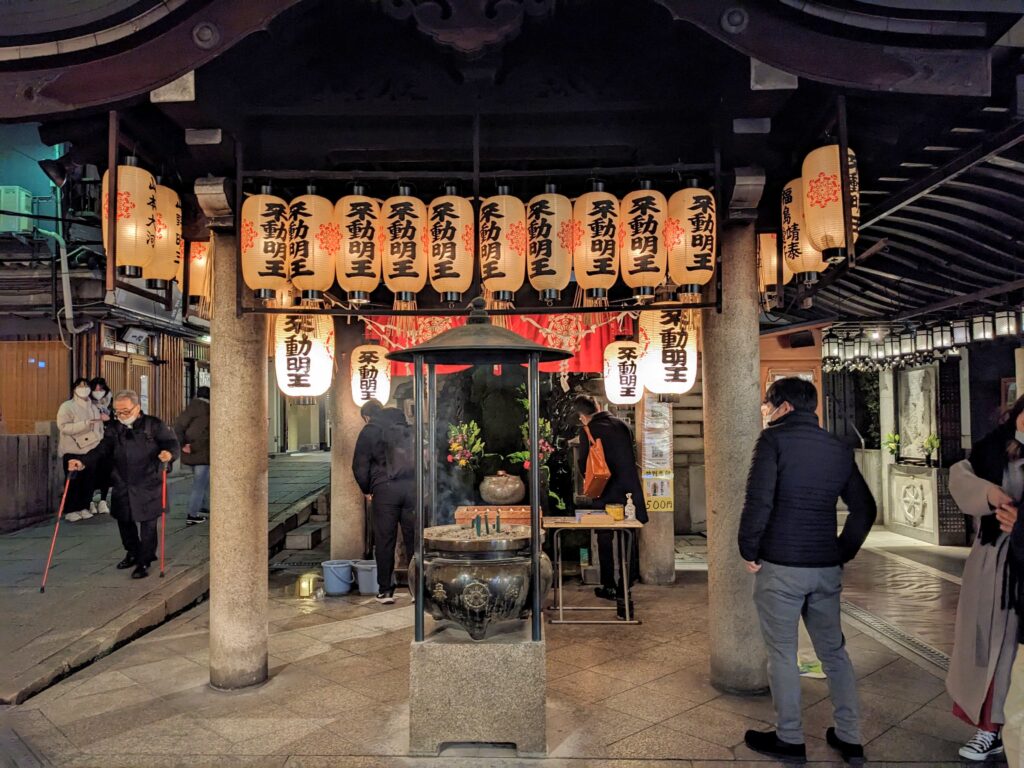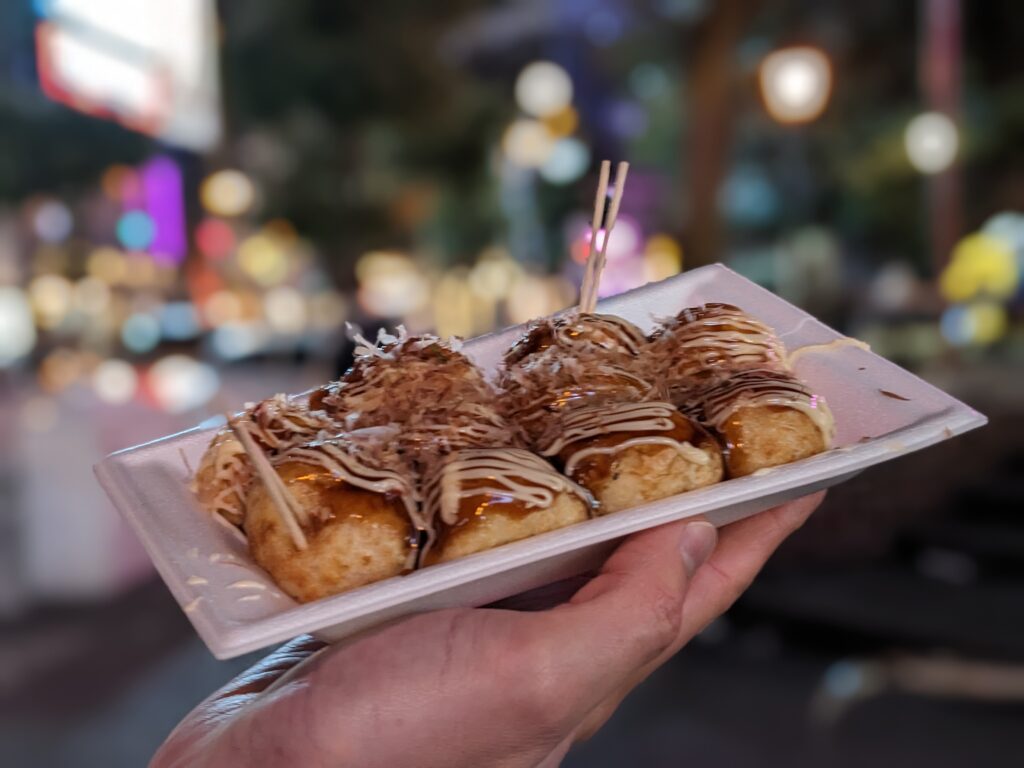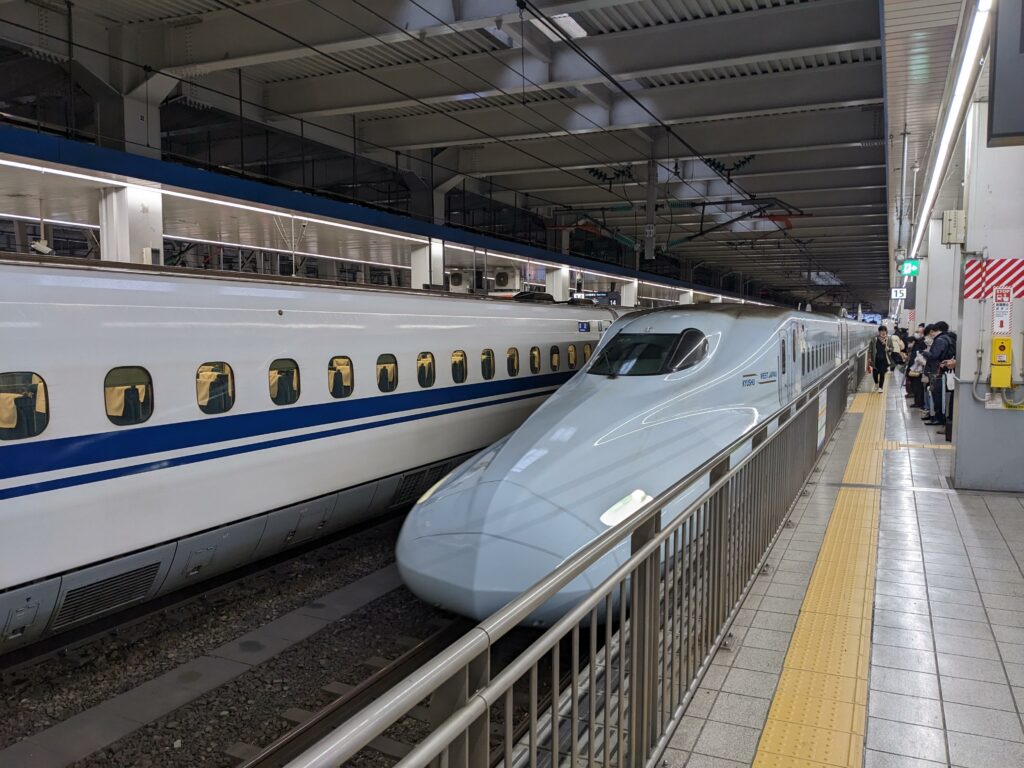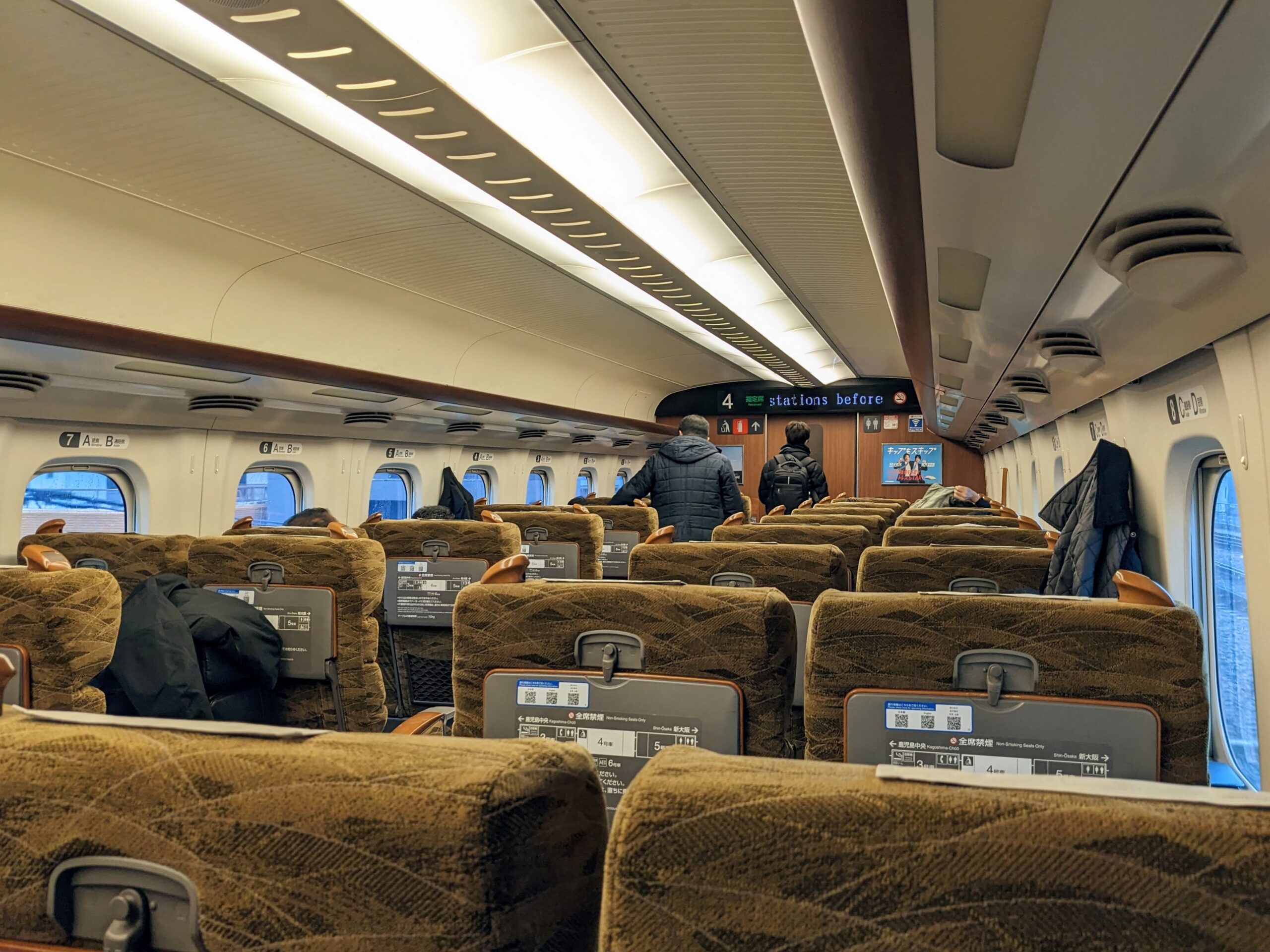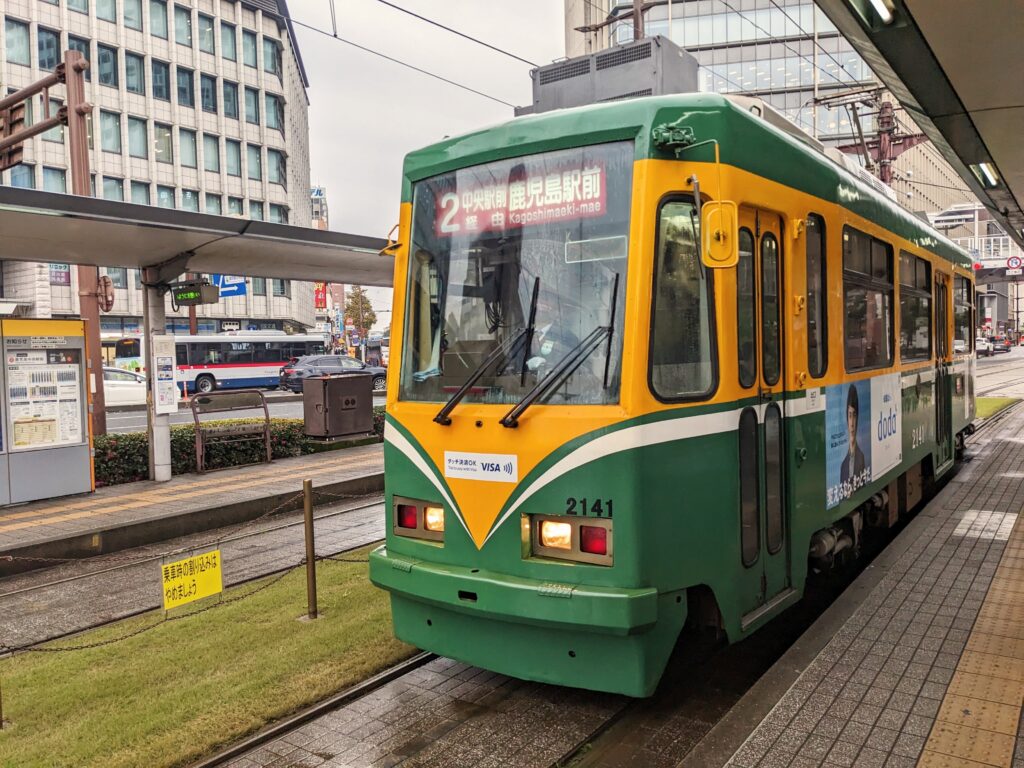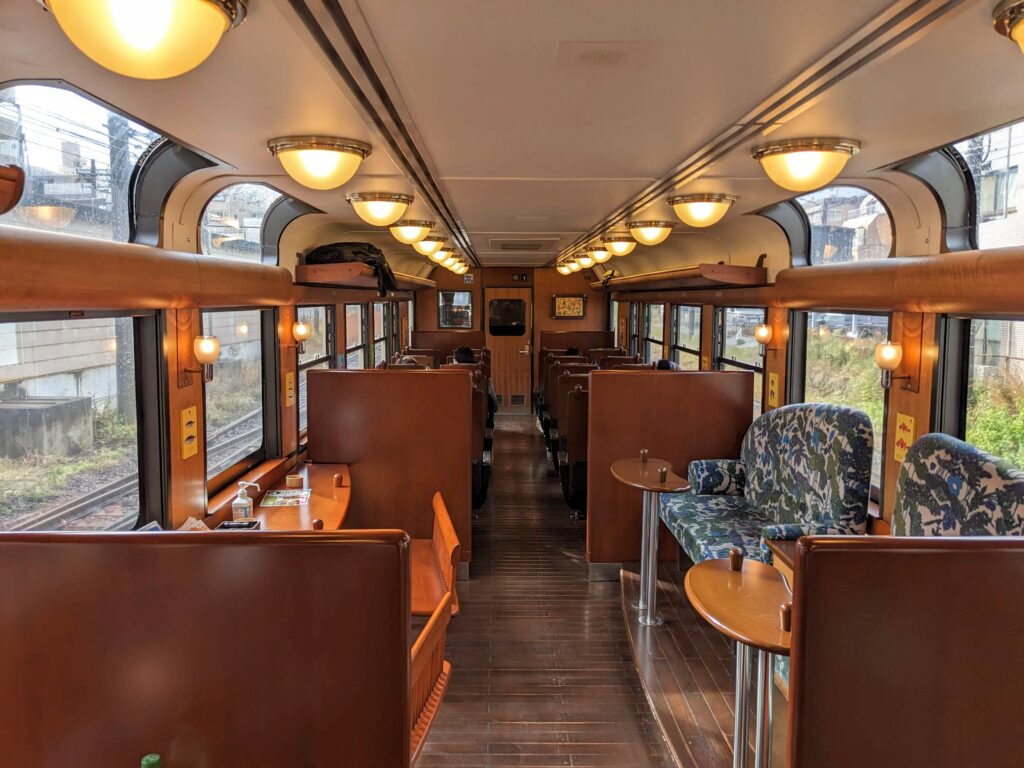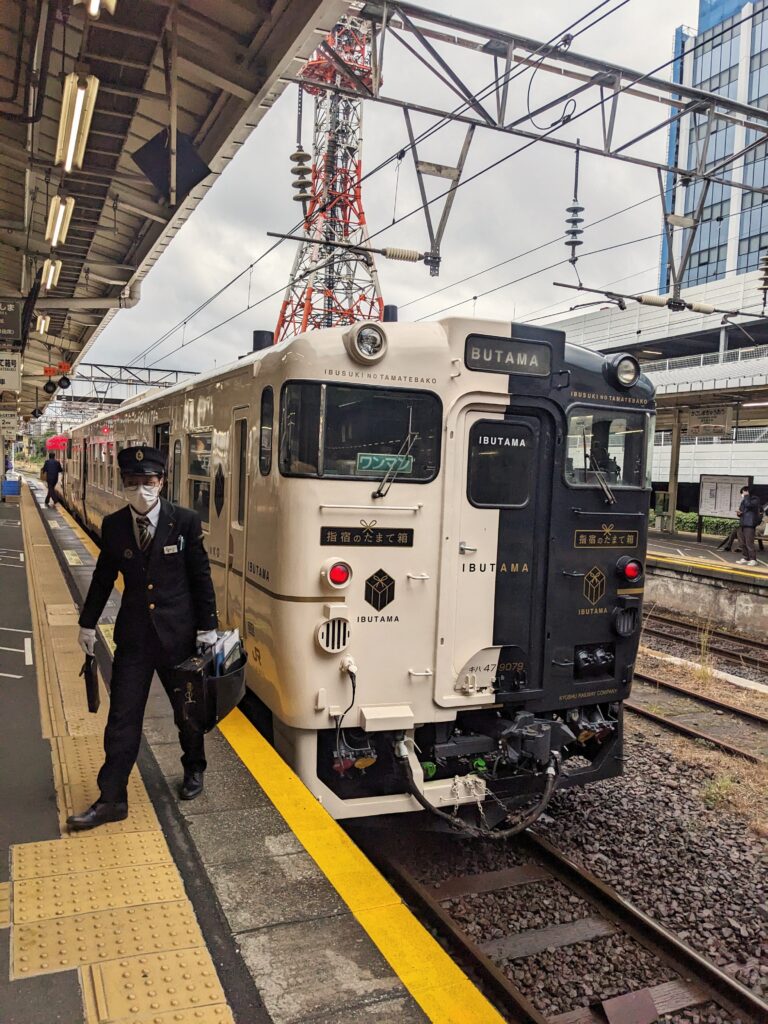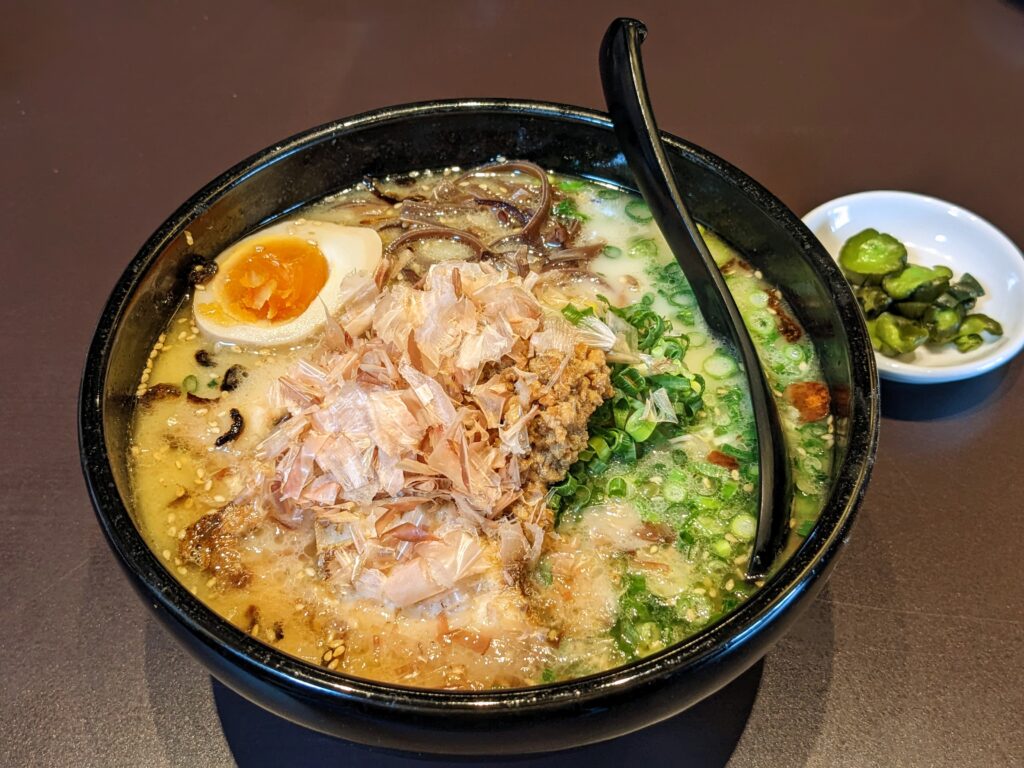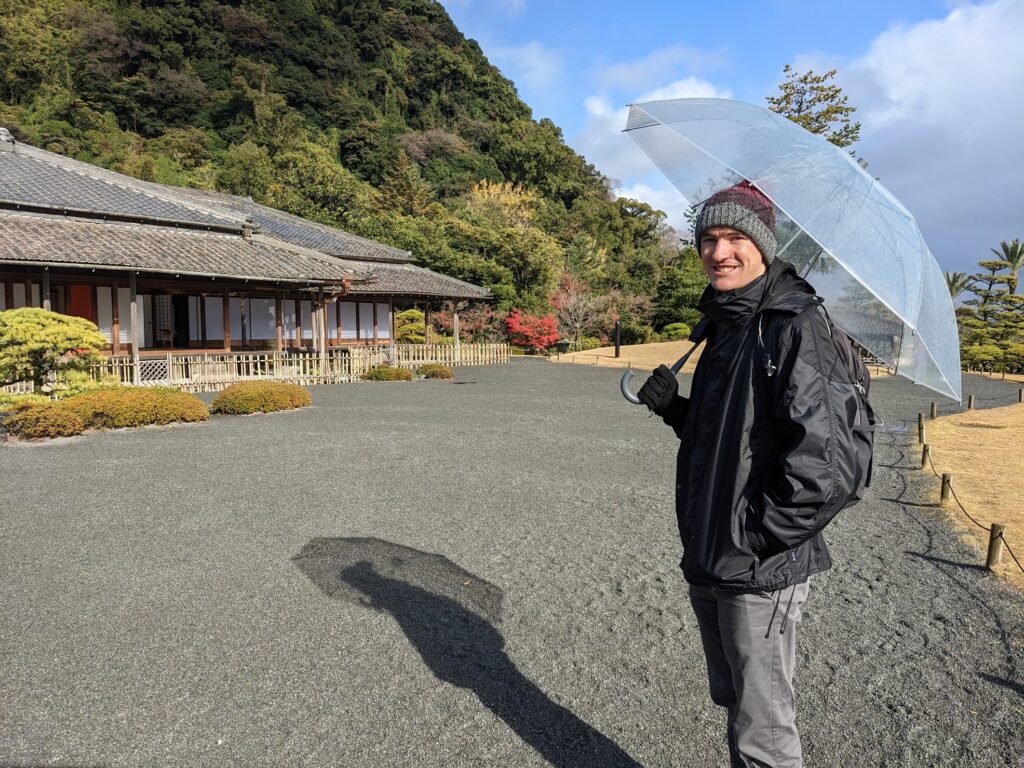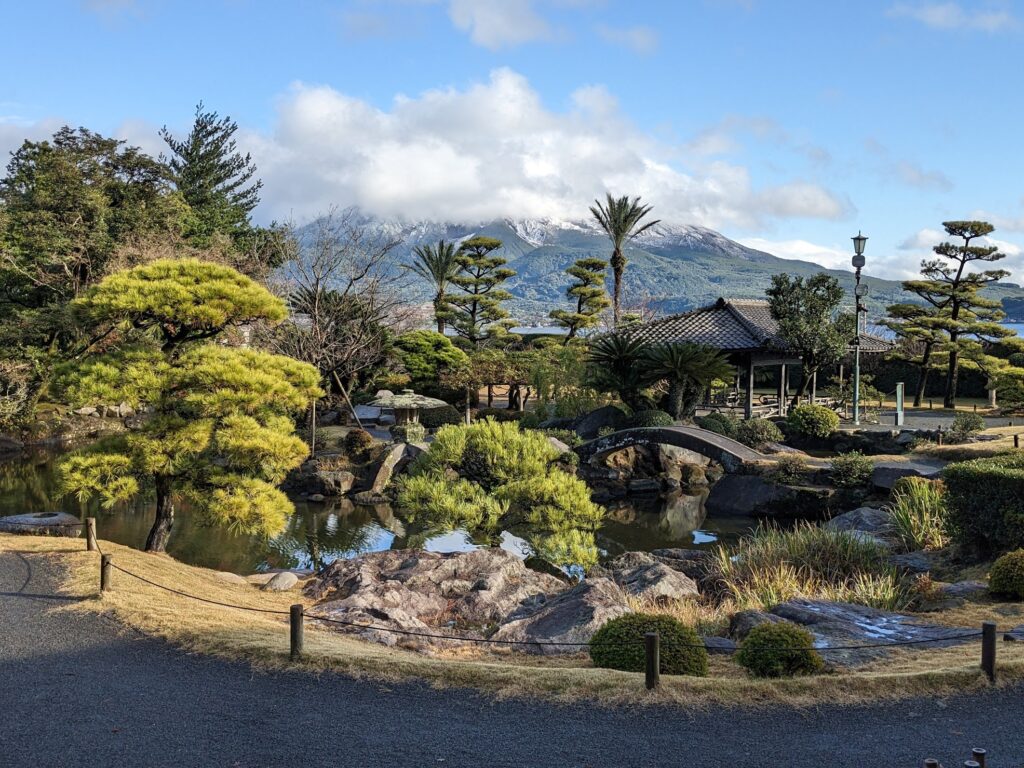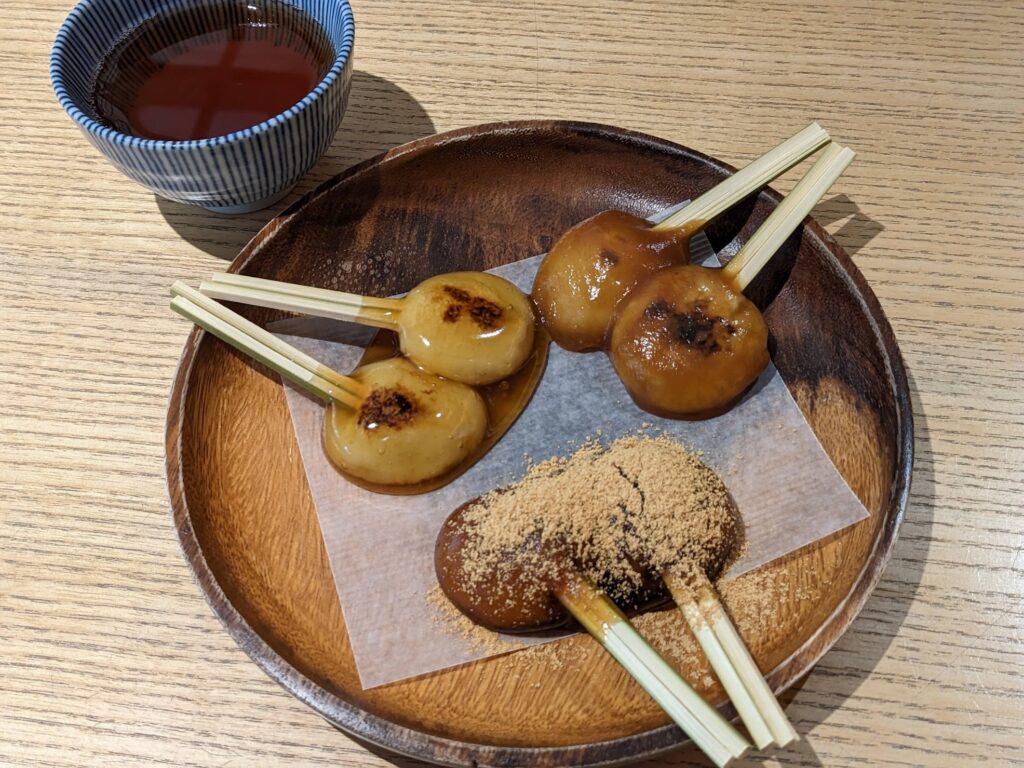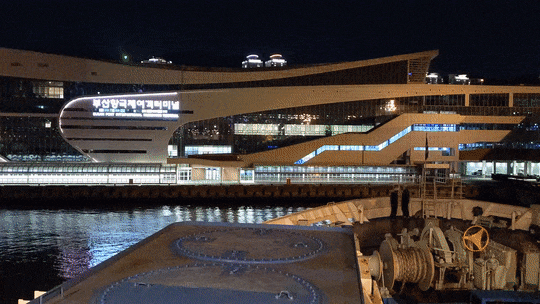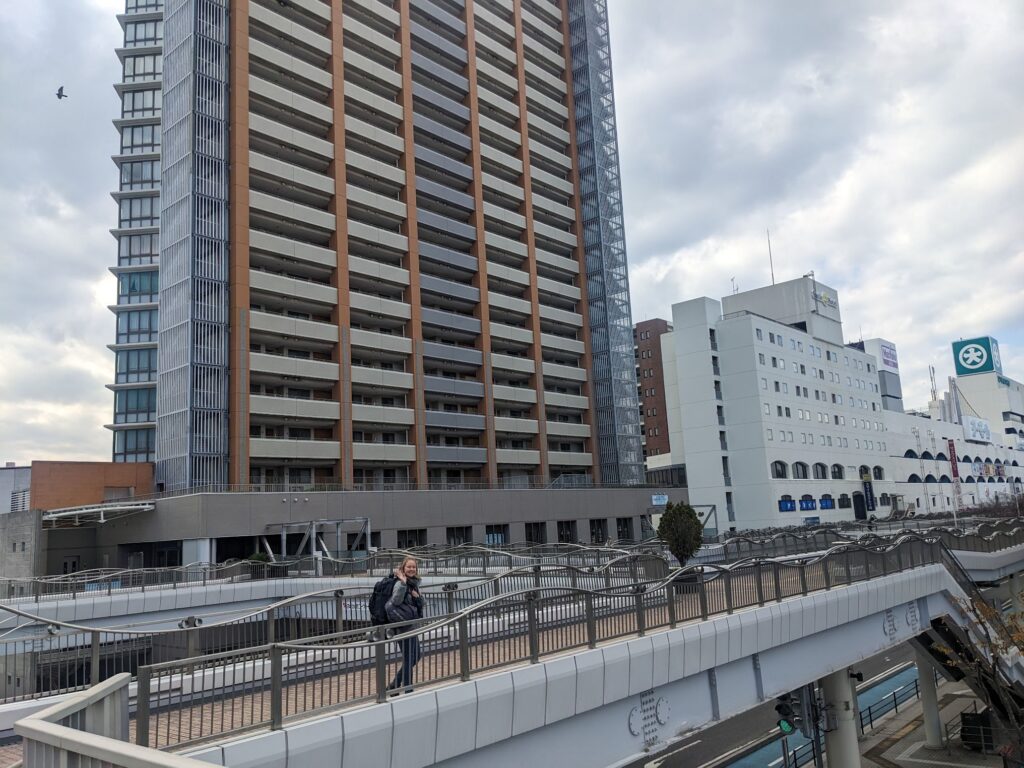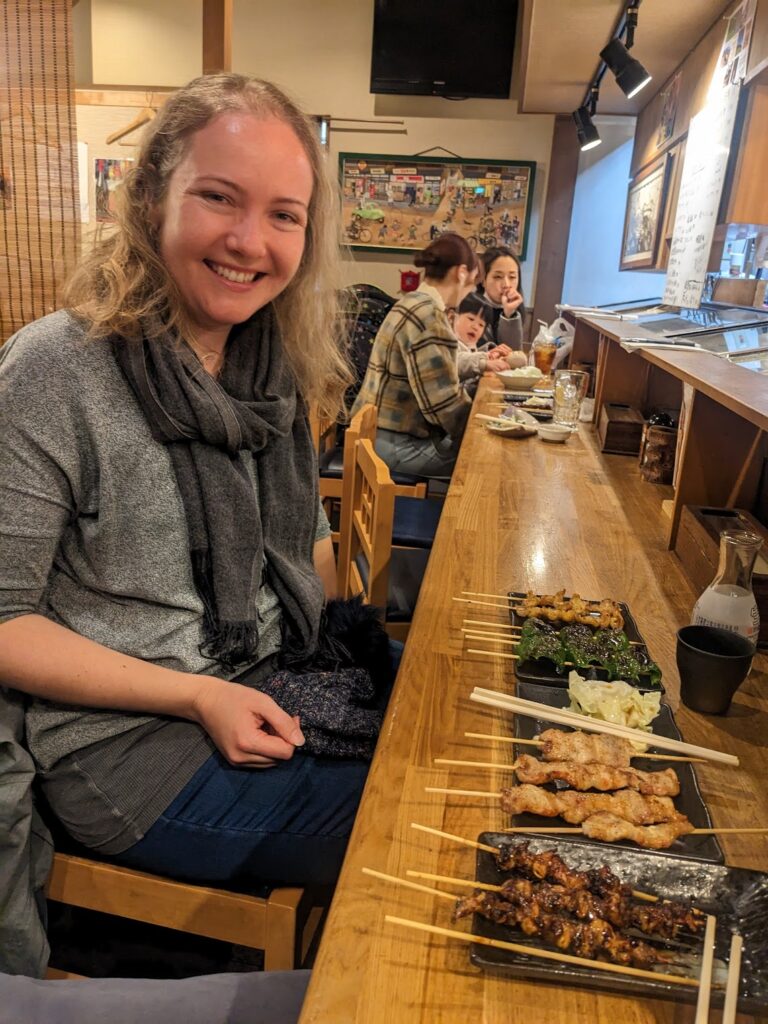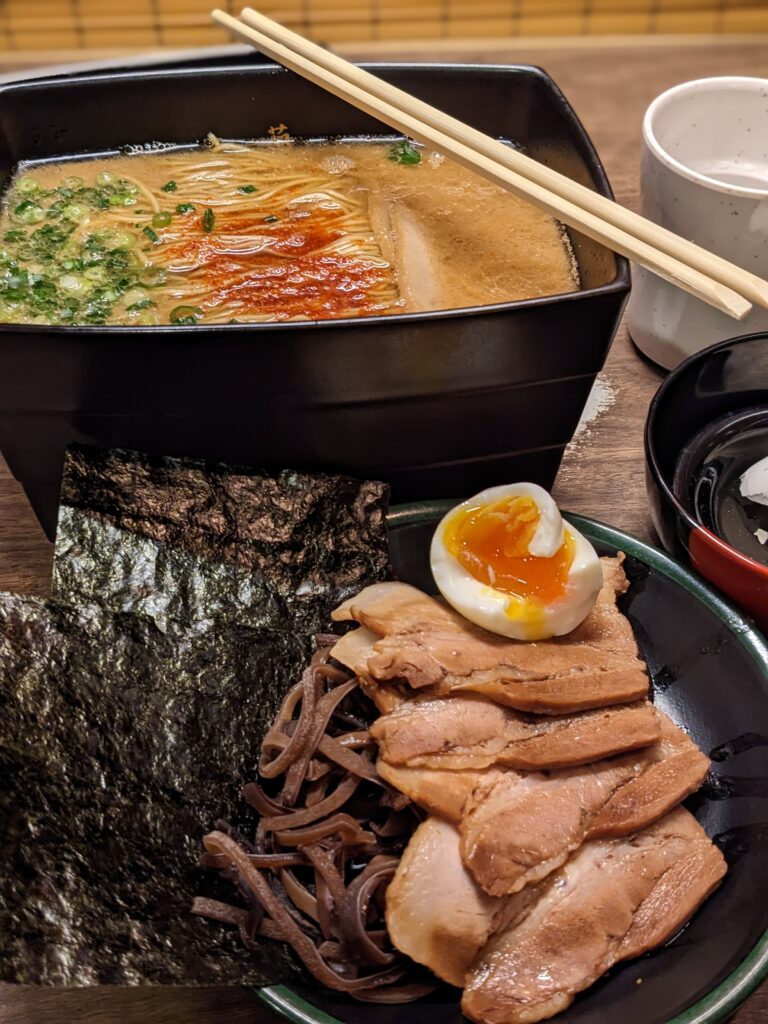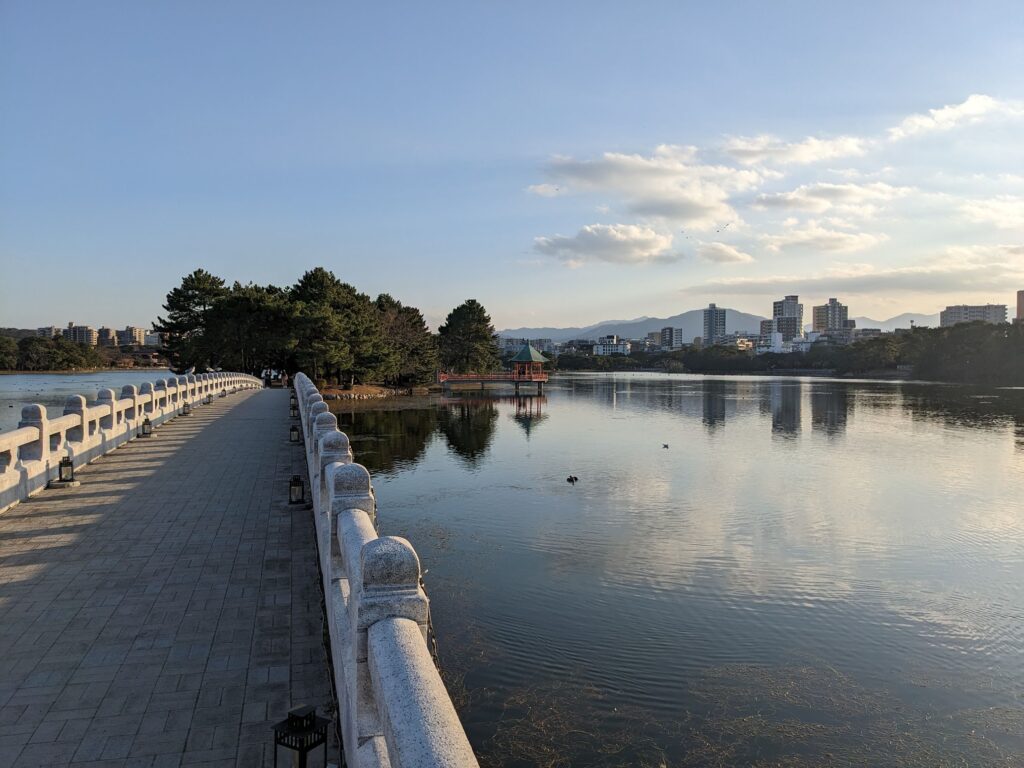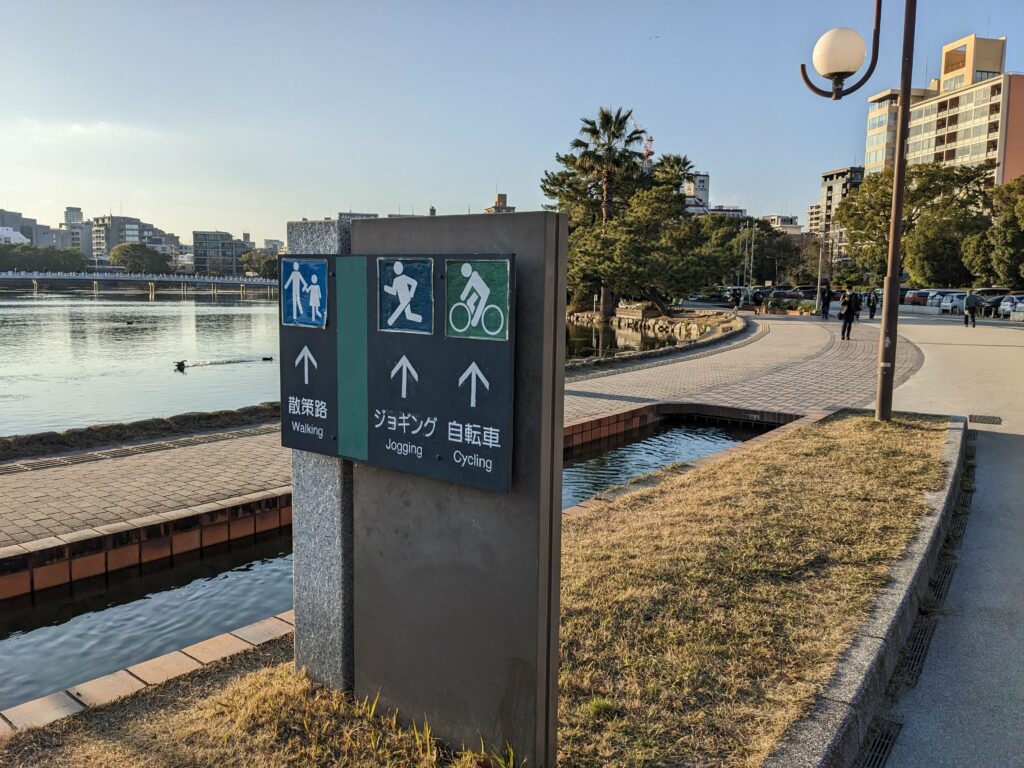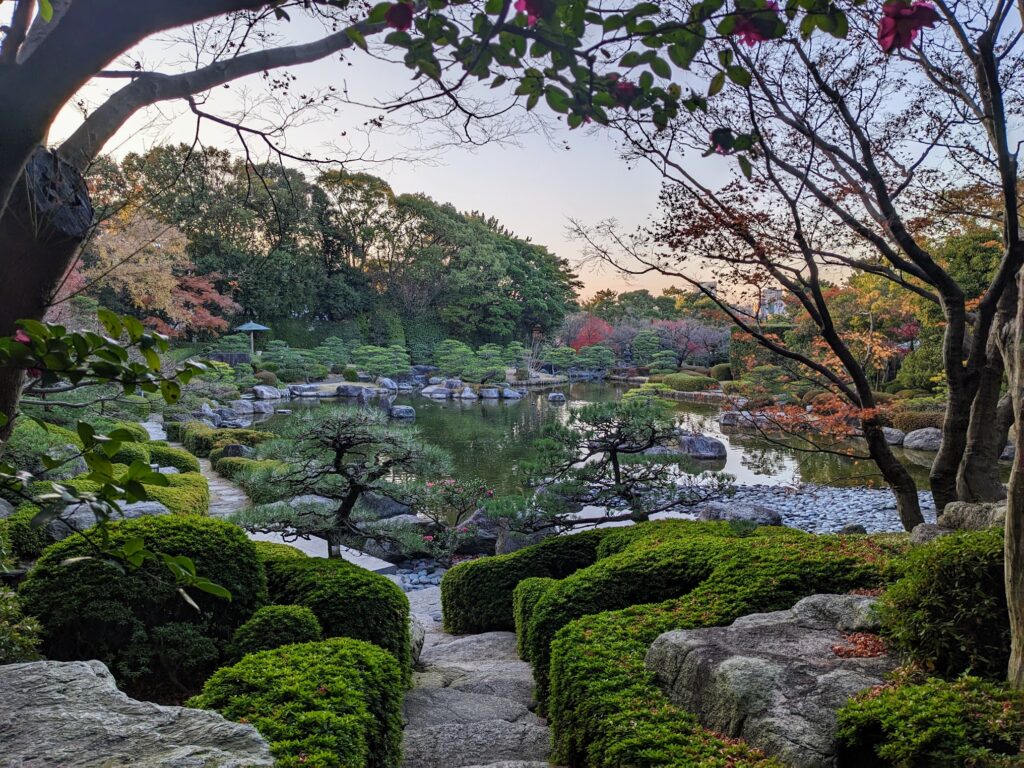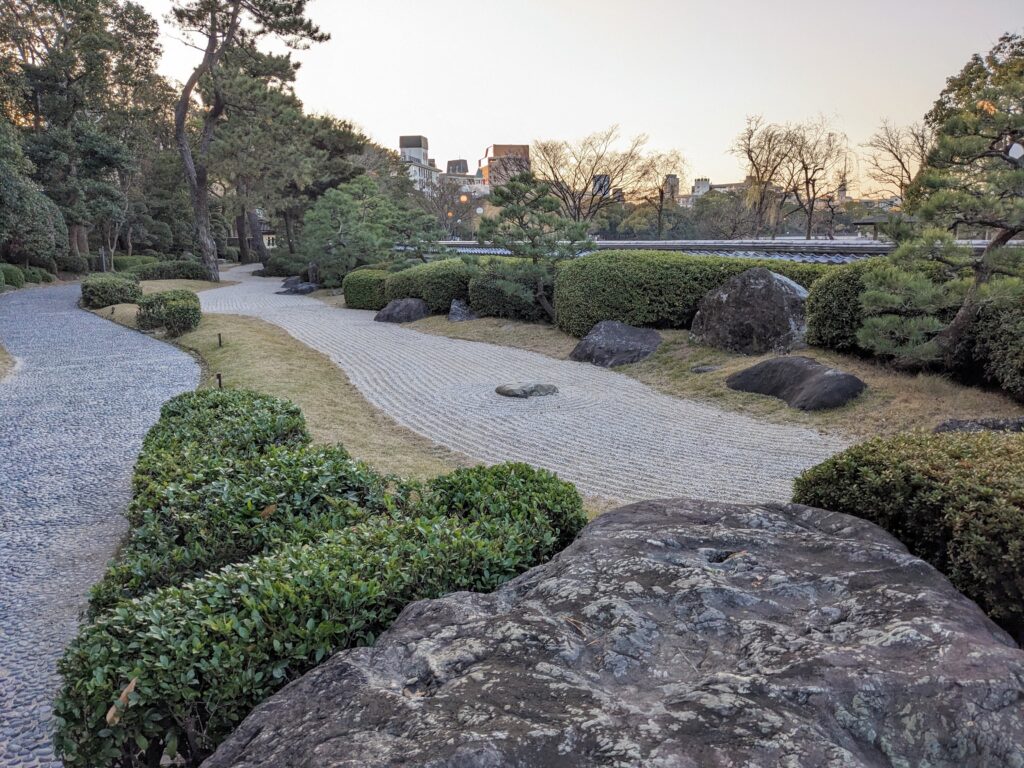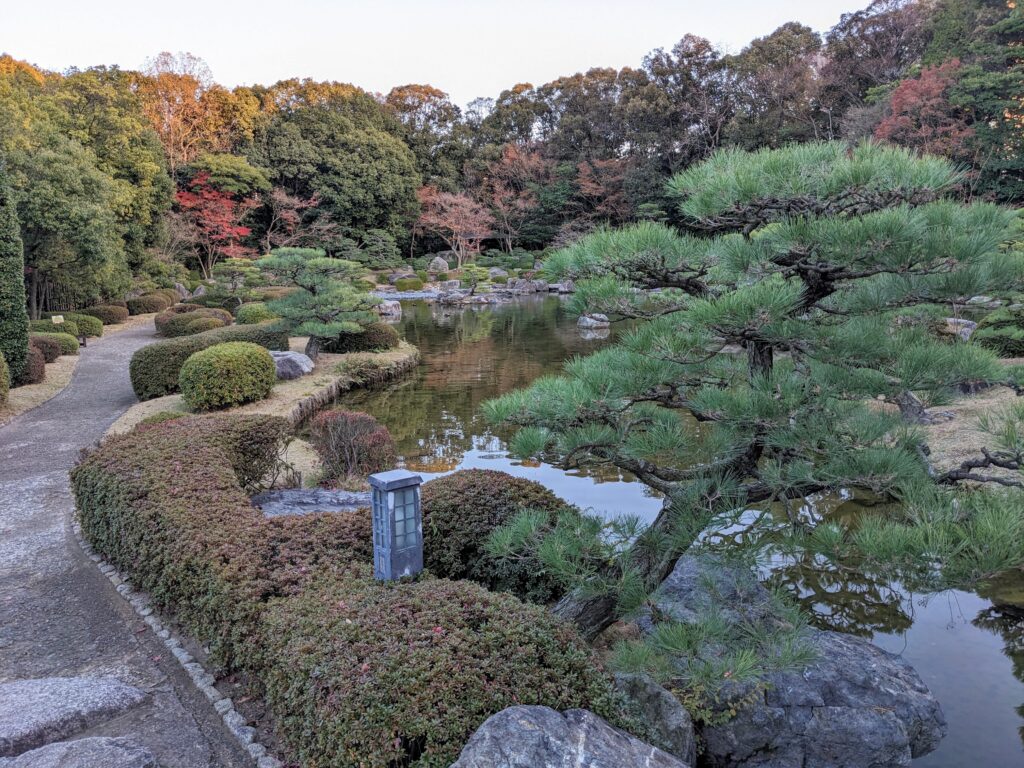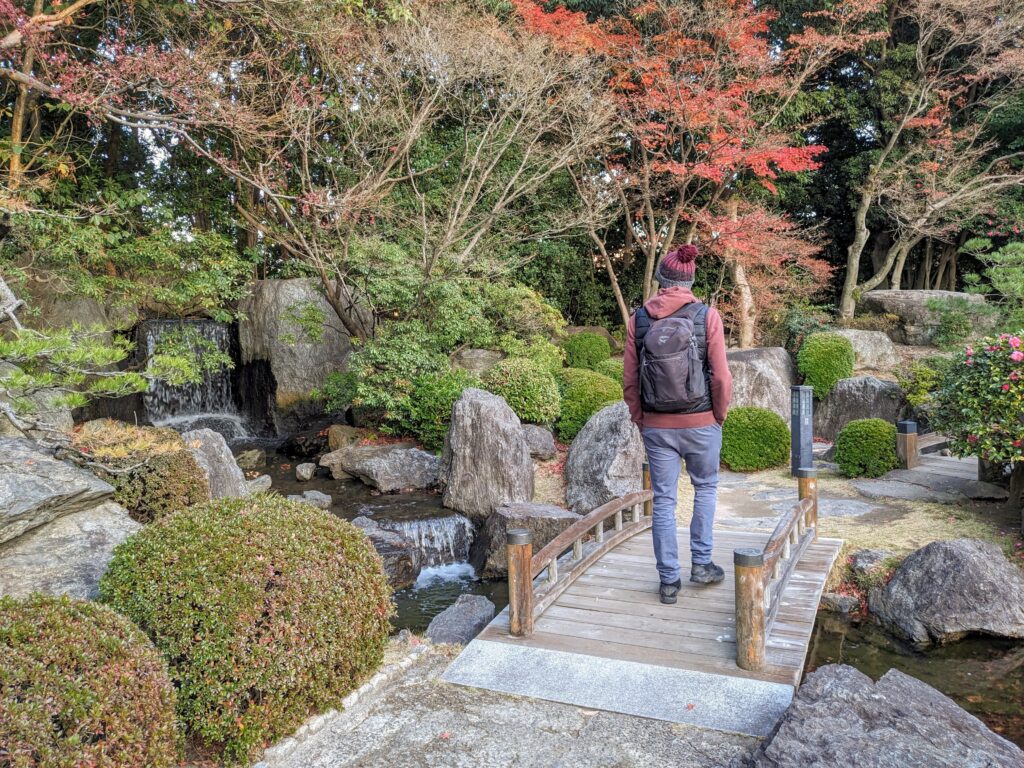We arrived in Hiroshima on Christmas Eve, and although it didn’t feel much like Christmas yet, the weather had at least obliged with a little bit of snow on the ground. This caused chaos on the rail network, and our bullet train was (shock horror) delayed by SIX MINUTES! We were very amused by the frequent and heartfelt apologies from the train conductor about this ‘serious delay’.
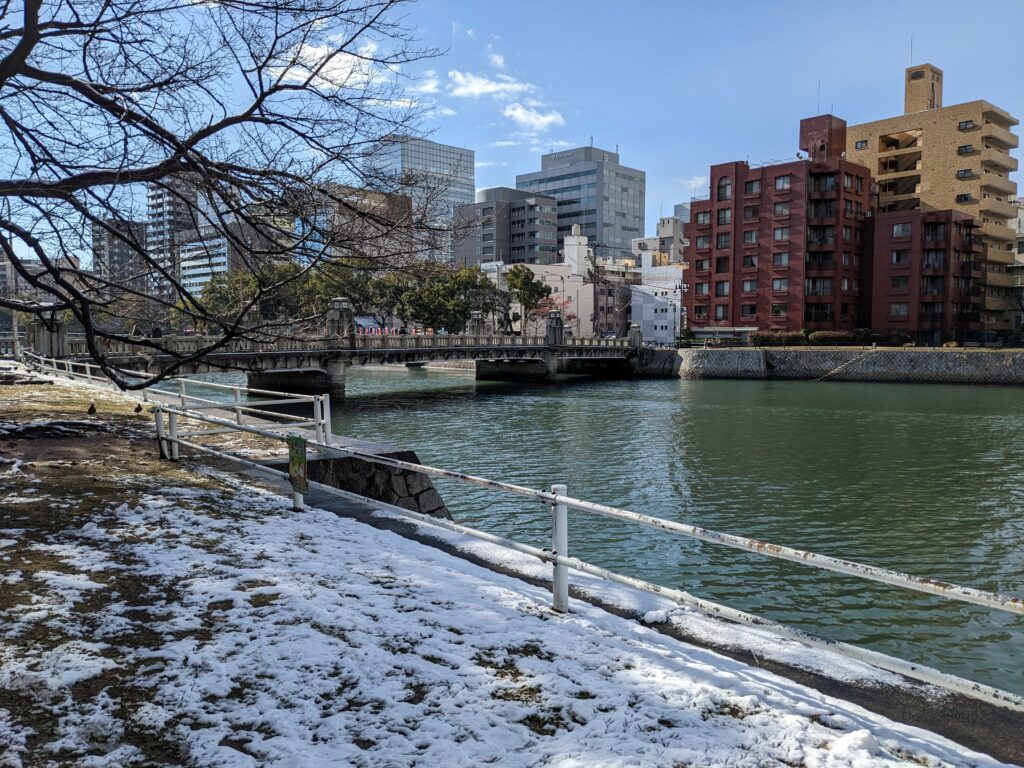
If you’re thinking that Hiroshima doesn’t sound like an obvious Christmas destination, you would be right! But it turns out that although Christmas itself isn’t a particularly big deal in Japan, Christmas Eve is like Valentine’s Day and then some, and so while we started planning our itinerary about three weeks in advance (very early by our standards), everywhere we looked was alarmingly booked up and extortionately expensive. So Tokyo was out, but Hiroshima turned out to be a pleasant city with plenty of winter illuminations and we were able to book a lovely hotel that only somewhat blew our budget.
Our first stop was at a confusing, five-storey conglomeration of restaurants that all served Okonomiyaki, a local speciality. This consisted of two thin egg crêpes sandwiching an enormous pile of noodles, cabbage, beansprouts, spring onion and pork, smothered in a rich, sweet and tangy sauce. We watched our humongous order (one with added teriyaki chicken and one with added cheese and rice cakes – which we only ordered because we had no idea how this could possibly go with the other ingredients) being prepared with great skill on the hotplate in front of us, and then dug in with some difficulty – I’m not sure they were designed for easy eating!


Oli ate the whole thing without being able to decide whether he liked it or not, but I enjoyed it, confusing as it was. I think the best comparison would be to call it a Japanese bubble and squeak!


Honestly, I probably wouldn’t have chosen to come to Hiroshima under other circumstances, but as we were here, we felt that we couldn’t skip visiting the Peace Memorial park and museum that remembered the victims of the atomic bomb dropped on the city in 1945. We stood on a bridge overlooking the atomic dome, one of the few buildings left standing near the hypocentre of the explosion (92% of the city’s buildings were destroyed) and now preserved as a permanent memorial. While we were there, a flock of birds flew down the river past the atomic dome and swooped over our heads. It was beautiful.

The museum itself was really harrowing, with many personal stories of those who had been caught up in the bombing, alongside graphic descriptions and photographs of their injuries, exhibits of personal belongings and other artefacts. For me, one of the exhibits that best illustrated the unimaginable heat of the explosion was a set of glass bottles that had fused together at an ink factory 1800 m from the hypocentre (below right).


But really, the most terrible part seemed to be the fallout from the explosion, with radioactive ‘black rain’ falling on those who had survived or had come into the city to help the wounded. Can you imagine being one of the ‘lucky ones’ by escaping serious injury or death during the explosion itself, only to live the rest of your life with the fear that any day now, you might experience the onset of dreadful symptoms caused by radiation?
Above all else, the museum really brought home the scale and longevity of suffering that the bomb caused and why it is so, so important that this kind of weapon should never be used again. The second part of the museum was dedicated to exactly this message, detailing the geopolitical context of the bombing and describing more recent efforts to achieve nuclear disarmament.
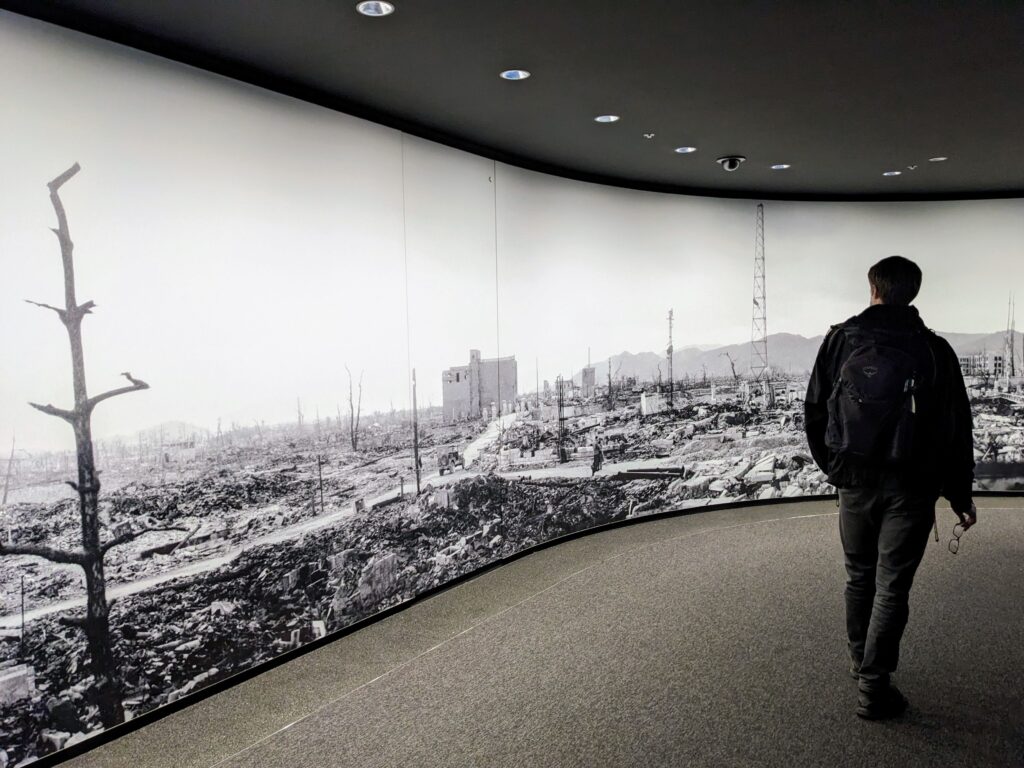
In the park outside the museum, we visited various other poignant memorials, including the Children’s Peace Monument. Surrounding this were shelters housing thousands upon thousands of origami paper cranes crafted into elaborate displays that are still sent from children around the world. These are in honour of Sadako Sasaki, a young victim of the bombing who believed that if she met her goal of folding 1000 paper cranes while receiving treatment for Leukaemia, she would survive her illness. She died before she could fold them all, but her classmates finished them on her behalf and they came to be seen as a symbol of peace. It felt like a rare bit of colour and hope in what had been a very sombre afternoon.


There’s a bit in one of the Harry Potter films where Harry and Hermione have been on the run so long that they don’t immediately realise it’s Christmas, and this is exactly how we felt. So, after a supermarket sweep to pick up some treats and a very casual ramen dinner that evening (avoiding lots of beautifully dressed couples out for their romantic Christmas Eve meals), we put on a film and attempted to get into the Christmas spirit.
The next morning, we felt a very long way from home, but we celebrated anyway with coffee, cava, Father Christmas shaped buns and another Christmas film.
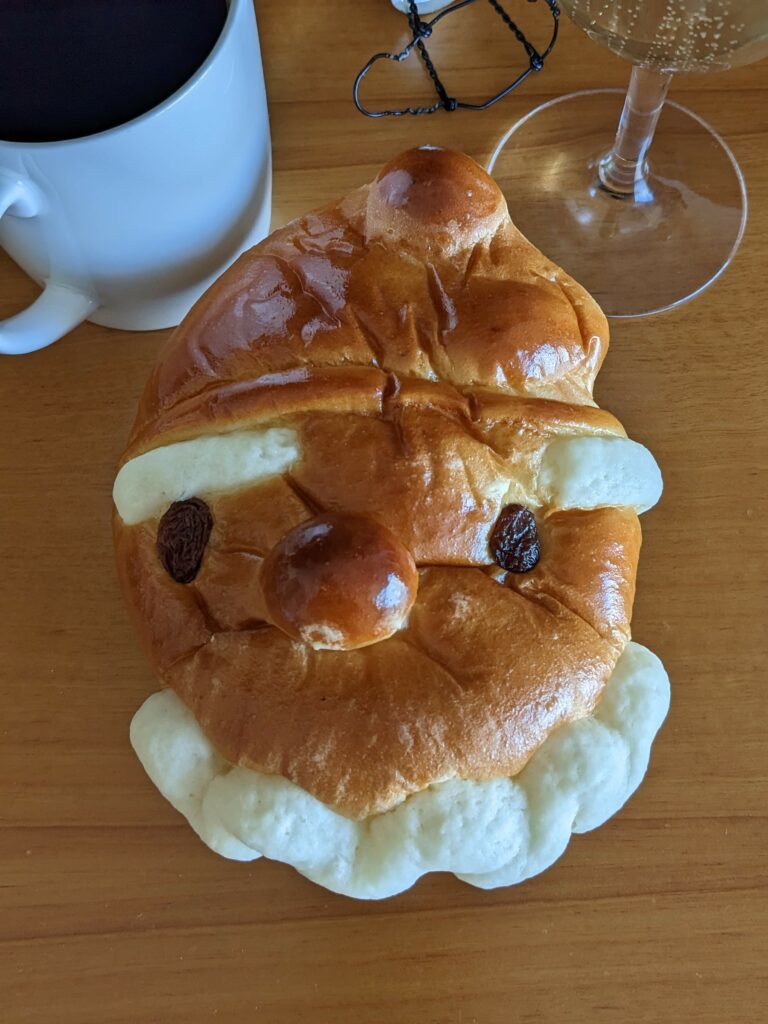
Next, it was time for the main event! We had pre-ordered our KFC about a week in advance (it is big business) and walked an hour’s round trip to collect it. This eased some of our guilt at eating fast food, and the rest was eased by the fact that we were doing Christmas the Japanese way! Admittedly, I think the idea is to have a KFC party with lots of friends, but eating in bed wearing our yukatas felt like a pretty good substitute.


That evening, we chatted to family as they opened presents and prepared for their Christmas dinners and drooled over the thought of all the pigs in blankets that we were missing.
We had plans in Tokyo on the 27th, so we decided to break our journey by spending Boxing Day in Osaka. With fewer than 24 hours in one of the biggest cities in the world, we had to be really selective about what to do and see. Food, castles and neon were on the agenda, and our first stop was Osaka Castle.
As night fell, we followed a self-guided walking tour of the lively, neon-lit Dotonbori area and snacked on as much local food as possible.
We had an early start the next day, but our hotel offered free instant ramen and alcoholic drinks before 11pm, so we couldn’t resist hanging out in the lobby for a while on our way back. Perhaps I hit the free shōchū too hard, but I had a bit of a moment with the hot drinks machine and managed to make up my ramen with coffee, rather than hot water. Whoops! Never one to be defeated, I ate it anyway and then didn’t sleep a wink.

To our horror, even while this first mishap was unfolding, we saw the hotel staff taking down the Christmas decorations. We’d read that this often happened to make space for New Year decorations (which is a much bigger deal here), but it was still very sad to see on Boxing Day!
This evening marked the end of our brief Christmas celebrations (and a very strange Christmas it had been, too) but we were extremely excited to be heading to Tokyo the next day to gatecrash our good friends’ honeymoon…
